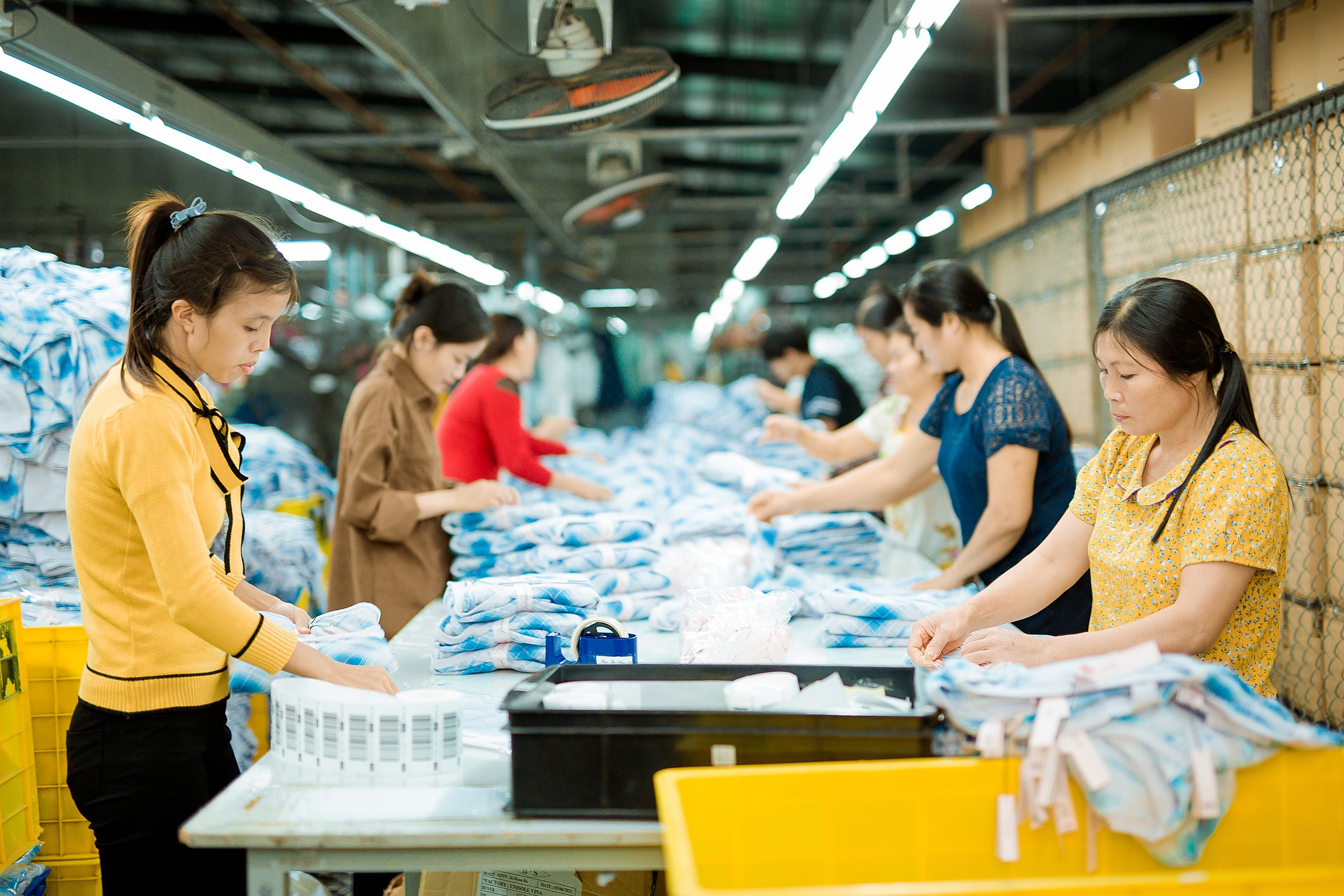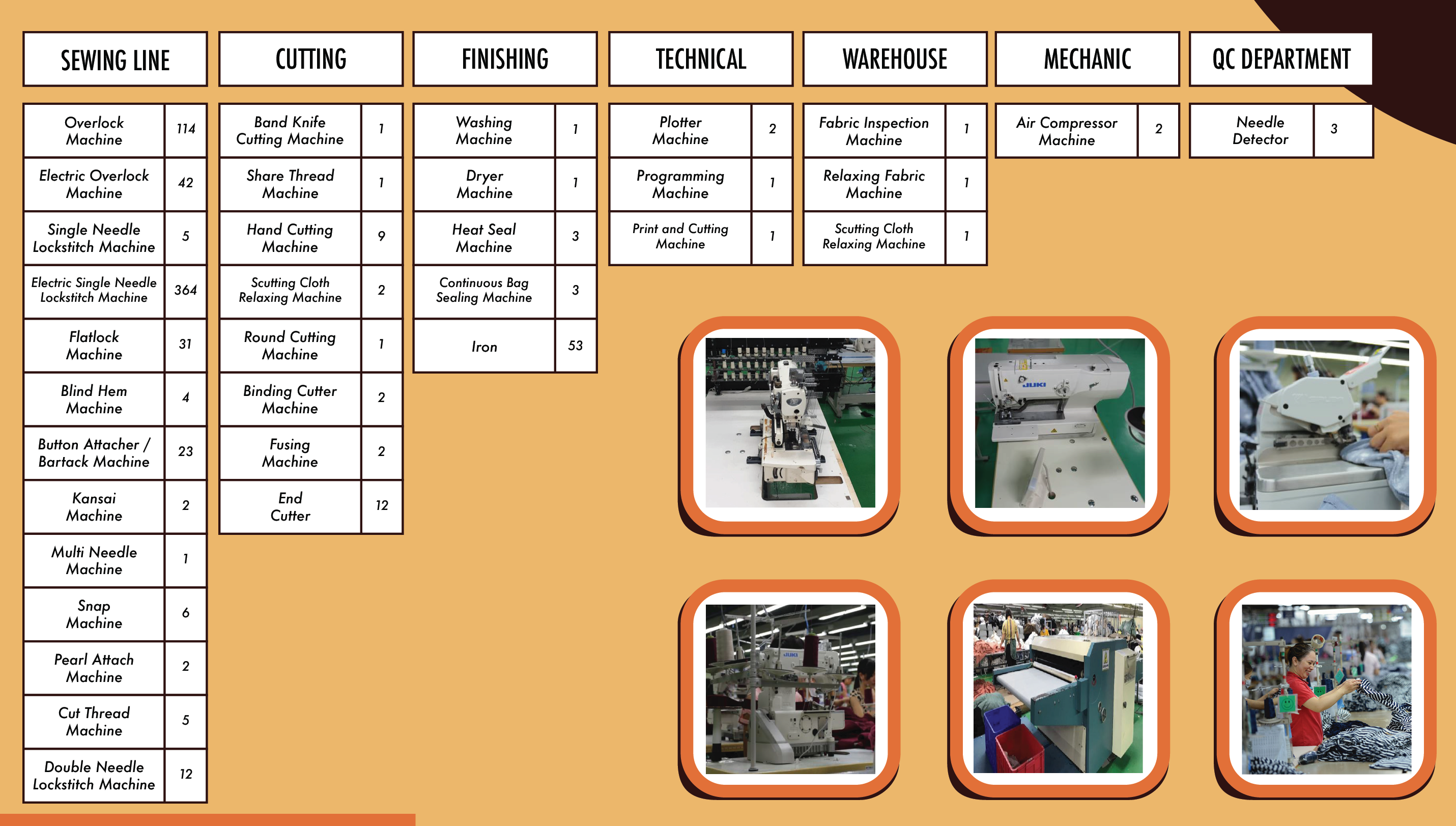In the garment industry, the layout of machines and workstations plays a critical role in optimizing workflow. A well-planned sewing line ensures a smooth material flow, minimizes handling time, and enhances production efficiency. Proper sewing line design allows operators to work efficiently with fewer interruptions, improving productivity, quality, and consistency across the garment manufacturing process.
What is a sewing line?
A sewing line refers to the structured arrangement of sewing machines, workstations, tools, and materials in a production area. The purpose of this setup is to create a seamless flow of materials through each operation with minimal backtracking or waiting.
By arranging workstations strategically, factories can streamline the production sequence, balance operator workloads, and increase output. An efficient sewing line reduces lead time, minimizes fabric waste, and strengthens coordination across departments.

Types of sewing line layouts
Straight line layout
The straight line layout is the most common configuration in the garment industry. Workstations are aligned in a single line, allowing garments to move easily from one station to the next. This system reduces unnecessary handling and waiting time. It is best suited for stable, high-volume styles where production flow remains consistent throughout the shift.
U-shaped layout
The U-shaped layout promotes tighter communication and collaboration among workers. Machines and workstations form a U configuration, reducing walking distance and enabling faster feedback between operators.
This layout improves team coordination and flexibility, especially when handling small or medium-sized production runs.
S-shaped layout
The S-shaped layout features a curved path resembling the letter “S.” It eliminates unnecessary backtracking and ensures smoother transitions between stations. This layout helps distribute work evenly while maintaining continuous material flow, making it suitable for long production sequences or factory floors with structural limitations.
L-shaped layout
In an L-shaped layout, machines are arranged in two perpendicular rows forming an L shape. This design facilitates continuous material movement and reduces bottlenecks.
It also optimizes floor space and allows for effective communication between adjacent stations. The L-shaped system is practical for production areas with columns or restricted floor layouts.
Cellular layout
The cellular layout divides the production line into small units or cells. Each cell contains specific machines and operators assigned to particular operations. These cells can be arranged in straight, U, or L patterns.
This structure is ideal for complex garments that require several subassemblies. It minimizes transportation time and improves quality through focused teamwork.
Crossover layout
The crossover layout uses multiple intersecting lines where operators can cross paths without interfering with one another. This model is efficient for limited floor areas and high operator density.
It enhances material circulation and maximizes production space utilization, making it suitable for compact factories.
Modular layout
The modular layout supports lean manufacturing principles. Machines are grouped strategically so multiple operators can work from a single workstation.
This arrangement reduces idle time and shortens material travel distances. The system allows easy product switching, improving flexibility for factories producing several styles in short runs.
Sewing line checklist for garment factories
Each sewing line has its own use and suitable for different purposes, products and designs. Check the following list to determine on the best layout for your factories:
|
Sewing lines |
When to use |
| Straight line | For one style with large quantities; fastest for long, steady runs. |
| U-Shaped line | For a few styles; promotes easy communication and quick problem-solving. |
| S-Shaped line | For long production sequences; prevents congestion and blockages. |
| L-Shaped line | For floors with columns or obstacles; fits tight spaces while maintaining flow |
| Cellular line | For complex garments with many components; teams handle sections before joining. |
| Modular line | For frequent style changes and short runs; supports one-piece flow. |
By utilizing a vertically integrated production model, Capital World Group consolidates key garment manufacturing stages – from pattern making and cutting to sewing line layout, finishing, and quality assurance – into a single, cohesive system. This comprehensive system ensures that the overall production flow is tightly controlled and highly adaptable, which in turn allows each sewing line to be independently optimized for maximum speed, accuracy, and cost efficiency.

This vertical management structure supports real-time coordination between departments, reduces production delays, and ensures each seam and stitch meets international standards.. Explore our vertical management model to learn how Capital World Group delivers a fully controlled supply chain that enhances flexibility and minimizes production costs.

